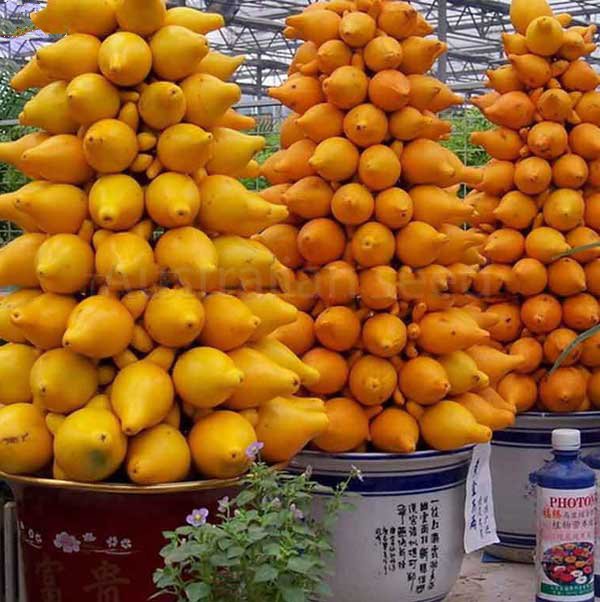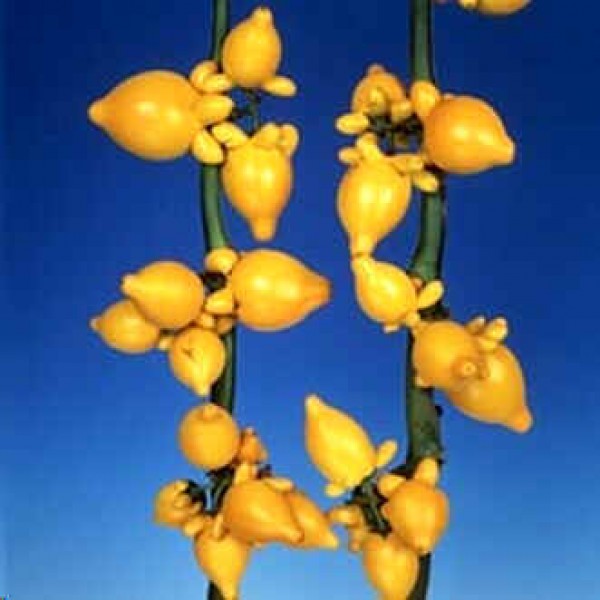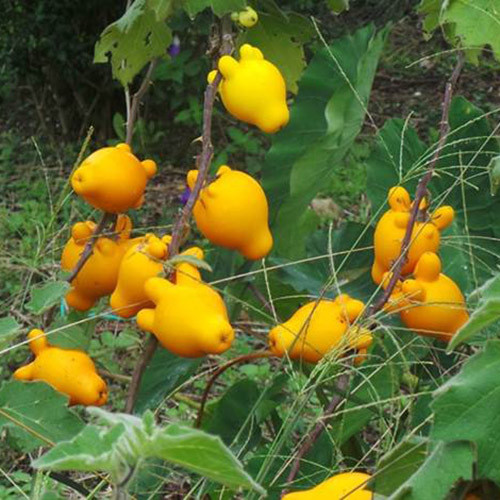Nipple fruit on plant stock image. Image of romance 190221609

Nipple fruit on plant stock image. Image of plant, green 222289123
Nipple Fruit, Cow's Udder Plant, Lady Nipples, Five-finger Fruit, Macaw Bush, Titty Fruit, Apple of Sodom, Nipple Nightshade, 乳茄, 五代同堂, 五指茄, 真奇之果 Moderate Water Herb or Spice Ornamental Flowers Herbaceous Plant Explore more topics Name Classifications and Characteristics Biogeography Description and Ethnobotany Landscaping Features

Nipple fruit on plant stock image. Image of romance 190221609
The nipplefruit is a short-lived perennial or annual native to South America and well established as a weed throughout Central America, the Caribbean and Asia. It's in the nightshade family or Solanaceae, along with the tomato, potato, pepper and eggplant. The plant itself can become quite imposting in tropical climates, much like a shrub.

Nipple fruit on plant stock photo. Image of beautiful 214601208
Scientific Name (Species, Family): Solanum mammosum, Solanaceae Common name(s): Nipple Fruit Type of reproductive material: Seed Weight of 100 seeds: 0.760 g / 0.026 oz Plant life cycle: Perennial (in nature), Annual (as a crop) Plant Part commercially exploited: Fruits Average Yield potential tons per hectare: 8 Outdoors If you are interested in learning more about Seeds, you can visit the.

Nipple fruit on plant stock photo. Image of outdoors 214601374
Nipple-fruit Solanum mammosum Also known as : Cow's udder, Apple-of-sodom The Solanum mammosum is commonly known as nipple-fruit because of its similarity to human breasts. It is a Pan American fruit, although inedible, and used for ornamental purposes instead. Planting Time Spring Toxic to Pets Care Guide for Nipple-fruit Soil See Details

Nipple fruit on plant stock photo. Image of eggplant 190221516
S. mammosum is an annual or tender perennial plant with poisonous fruit, reported as invasive in Cuba (Oviedo Prieto et al., 2012) as well as in the Philippines (Merrill, 1923), Fiji, Tonga, and parts of Hawaii (Space and Flynn, 2002; PIER, 2014).It is listed as an 'agricultural weed', 'causal alien', 'naturalised' and 'weed' in the Global Compendium of Weeds (Randall, 2012).

Nipple fruit on plant stock photo. Image of nature, plant 213595036
Solanum villosissimum Sun Exposure Full Sun Foliage Succulent Height 36-48 in. (90-120 cm) Spacing 24-36 in. (60-90 cm) Hardiness USDA Zone 9b: to -3.8 °C (25 °F) USDA Zone 10a: to -1.1 °C (30 °F) USDA Zone 10b: to 1.7 °C (35 °F) USDA Zone 11: above 4.5 °C (40 °F) Danger All parts of plant are poisonous if ingested

Nipple fruit on plant stock photo. Image of background 214601168
Nipple Fruit (Solanum mammosum) - You Grow Girl Nipple Fruit (Solanum mammosum) 4 Comments Yesterday afternoon I was treated to an impromptu flower garden tour in the mountain village of Giraudel, Dominica. This region is known for it's particularly rich soil and has, as a result, become a hub of flower growers and gardeners.

Nipple fruit on plant stock image. Image of fresh, eggplant 188934469
Plant An annual or perennial, woody shrub which is usually 1.5 m in height. The branched stems are brown or purple to green in color. The flowers are pink to purple and 2.5 cm long. The leaves are broad, hairy, spiny, ovate-orbicular and 10-25 cm in length.

Nipple fruit on plant stock image. Image of closeup 222289333
The fruit has a mildly sweet and tangy taste and is similar to tomatoes but with a distinctive flavor. In summary, Solanum Mammosum L. is a tropical plant with wavy, hairy, and rough leaves that produce huge, round or oval-shaped fruits. The fruit is an excellent source of vitamins and minerals and has both medicinal and culinary uses.

Nipple fruit on plant stock photo. Image of decorative 190221446
Common Name: nipplefruit Type: Herbaceous perennial Family: Solanaceae Native Range: Tropical Americas Zone: 11 to 12 Height: 2.00 to 3.00 feet Spread: 2.00 to 3.00 feet Bloom Time: April to June Bloom Description: Purple with white petal stripes Sun: Full sun Water: Medium Maintenance: Low Suggested Use: Naturalize Flower: Showy Leaf: Evergreen

Buy, SOLANMUM mammosum, Nipple Fruit, Udder Fruit, Seed Australian Seed
Read customer reviews & find best sellers. Save time and shop online for your kitchen. Free UK delivery on eligible orders!

Nipple fruit on plant stock image. Image of fruit, nature 188934447
Each fruit contains several reddish-brown seeds. Fruiting Time: Late summer or early fall. Flower Color: 1"-2". Late spring or early summer. Propagation: Seeds: Days to germinate: 3 to 10 days. Depth to plant seed: Surface sow, lightly covering with soil.

Rare Exotic Nipple Fruit Plant 15 Seeds Home & Hobby Floral & Garden Crafts
Solanum mammosum are real — they are also known as Nipple Fruit. Unfortunately, Solanum Mammosum is poisonous. However, they can be eaten when unripe. When eaten prepared they are a good source of calcium, iron, and vitamin B. However, caution should be taken to ensure the fruit is unripe and prepared properly to avoid poisoning.

seeds Solanum mammosum Nipple Fruit 5 Home & Living Outdoor & Gardening
Description Small shrubby perennial that can be grown as an annual. The nipple fruit is related to the naranjilla and tomato, and the plant looks similar. Large velvety leaves have purple veins and furry hair, along with prominent spikes. The branches and stems are also dotted with firm thorns. Bushy shrub to 3-6ft.

Nipple fruit on plant stock photo. Image of solanum 218127128
Solanum mammosum, commonly known as Nipple Fruit or the Cow's Udder plant, is a tropical and subtropical perennial plant belonging to the Solanaceae family. Native to South America, this unique and ornamental plant is known for its distinctive fruits, which resemble a cluster of large, brightly colored, and somewhat bizarre-looking.

Photo of the entire plant of Nipple Fruit (Solanum mammosum) posted by Dutchlady1
Solanum mammosum, commonly known as nipplefruit, [1] fox head, [2] cow's udder, or apple of Sodom, is an inedible Pan-American tropical fruit. [3] The plant is grown for ornamental purposes, in part because of the distal end of the fruit's resemblance to a human breast, while the proximal end looks like a cow's udder.